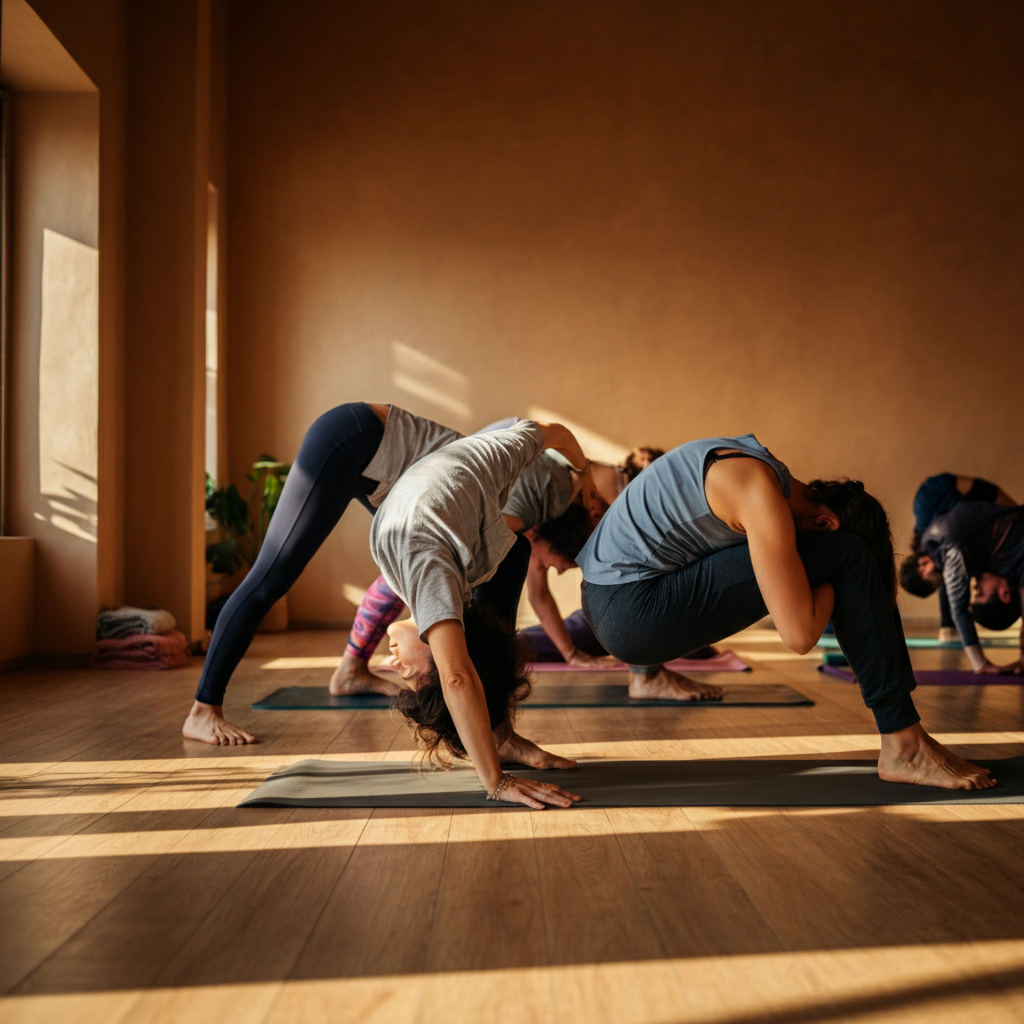The Different Disciplines of Yoga
Yoga is more than just physical exercise; it’s a practice that harmonizes the body, mind, and spirit. Originating in ancient India, yoga has evolved into a global phenomenon, offering individuals a pathway to better health, relaxation, and self-discovery. But did you know there are multiple yoga disciplines catering to different needs and intentions? Whether you’re seeking to build strength, alleviate stress, or deepen your spirituality, there’s a style of yoga for you.
This guide will walk you through the most popular types of yoga, their unique qualities, and how to find the one that resonates with your goals.
Understanding Yoga Disciplines
Yoga disciplines represent different practices and philosophies within yoga, each emphasizing certain aspects of well-being. While some focus on physical postures and fitness, others center around meditation, breath control, or spiritual growth. Let’s explore them one by one.
Hatha Yoga
Hatha Yoga is one of the most accessible forms of yoga, making it ideal for beginners. Derived from Sanskrit, “Hatha” means force, but don’t be intimidated; it’s gentle and slow-paced.
Key Features:
- Basics Focus: Hatha yoga serves as the foundation for many styles, combining poses (asanas) and breathwork (pranayama).
- Common Poses: Downward Dog (Adho Mukha Svanasana), Warrior Pose (Virabhadrasana), and Tree Pose (Vrksasana).
- Benefits:
- Improves flexibility and balance.
- Reduces stress through mindful breathing.
- Introduces beginners to yoga fundamentals.
Vinyasa Yoga
Vinyasa Yoga, often called “flow yoga,” is a dynamic and continuous sequence of movements synchronized with breath.
Key Features:
- Movement-Based: Each pose transitions seamlessly into the next.
- Energetic: Offers an aerobic-like experience, making it excellent for fitness enthusiasts.
- Benefits:
- Builds cardiovascular endurance.
- Enhances coordination and balance.
- Cultivates a meditative state through rhythmic movement.
Ashtanga Yoga
Ashtanga Yoga is the go-to practice for individuals who crave intensity and structure. Developed by K. Pattabhi Jois, this discipline involves a fixed sequence of poses performed in rapid succession.
Key Features:
- Structured Practice: Follows six predetermined series of increasing difficulty.
- Intense Dynamics: Requires strength, flexibility, and discipline.
- Benefits:
- Builds physical strength and stamina.
- Sharpens focus and perseverance.
- Perfect for disciplined individuals seeking a challenge.
Restorative Yoga
For anyone in need of deep relaxation, Restorative Yoga is a therapeutic choice. This practice involves gentle poses held for extended periods using props like bolsters and blankets.
Key Features:
- Relaxation-Oriented: Focuses on total relaxation and restoration.
- Gentle and Slow: Provides a meditative experience.
- Benefits:
- Reduces stress and anxiety.
- Promotes healing and recovery.
- Enhances mindfulness and well-being.
Yin Yoga
Yin Yoga is all about deepening flexibility and enhancing body awareness. It involves holding poses for several minutes, targeting connective tissues and joints.
Key Features:
- Deep Stretching: Works on ligaments, tendons, and fascia.
- Slow-Paced: Encourages stillness and introspection.
- Benefits:
- Improves joint health and mobility.
- Promotes a meditative state of mind.
- Balances active (Yang) workout routines.
Bikram Yoga
Bikram Yoga, often associated with hot yoga, involves practicing in a heated environment ranging from 95–108°F (35–42°C). It consists of a set sequence of 26 postures and two breathing exercises.
Key Features:
- Heat and Sweat: Warmer temperatures promote detoxification and flexibility.
- Set Routine: The same sequence is practiced every session.
- Benefits:
- Enhances flexibility.
- Promotes detoxification through sweating.
- Builds mental resilience.
Kundalini Yoga
Kundalini Yoga blends spiritual practices with physical postures, mantras, and breathwork to awaken “kundalini energy” at the base of the spine.
Key Features:
- Spiritual Focus: Incorporates chanting, meditation, and kriyas (specific exercises).
- Unique Elements: Utilizes repetitive movements and breathing techniques.
- Benefits:
- Deepens spiritual awareness.
- Enhances energy and vitality.
- Encourages mental clarity.
Anusara Yoga
Anusara Yoga emphasizes heart-opening poses and body alignment. Founded by John Friend, it’s known for its cheerful and inclusive philosophy.
Key Features:
- Alignment-Based: Focuses on proper form.
- Heart-Opening Philosophy: Encourages self-expression and joy.
- Benefits:
- Improves posture and alignment.
- Boosts self-confidence.
- Promotes emotional healing.
Iyengar Yoga
Named after B.K.S. Iyengar, this discipline focuses on precision and detail, often using props like belts and blocks to perfect poses.
Key Features:
- Precision-Oriented: Ensures each pose is done correctly.
- Prop Usage: Supports individuals of all skill levels.
- Benefits:
- Ideal for injury recovery.
- Builds strength and flexibility over time.
- Offers therapeutic applications.
Sivananda Yoga
Sivananda Yoga follows a holistic approach, focusing on physical, mental, and spiritual well-being. It emphasizes the “Five Points of Yoga”: proper exercise, proper breathing, proper relaxation, proper diet, and positive thinking/meditation.
Key Features:
- Five-Point Philosophy.
- Holistic Approach.
- Benefits:
- Balances body and mind.
- Encourages healthy lifestyle choices.
- Promotes inner peace.
Jivamukti Yoga
Jivamukti Yoga combines traditional yoga practices with activism, encouraging compassion for all beings. It integrates asanas, spiritual teachings, meditation, and music.
Key Features:
- Activism and Spirituality.
- Creative and Socially Conscious Themes.
- Benefits:
- Fosters emotional and ethical growth.
- Deepens the mind-body connection.
- Builds a vibrant sense of community.
Choosing Your Yoga Discipline
Finding the right yoga discipline depends on your fitness level, goals, and preferences.
- For Beginners: Start with Hatha or Vinyasa.
- For Fitness Enthusiasts: Try Pilates-infused yoga, or Vinyasa or VIN.
